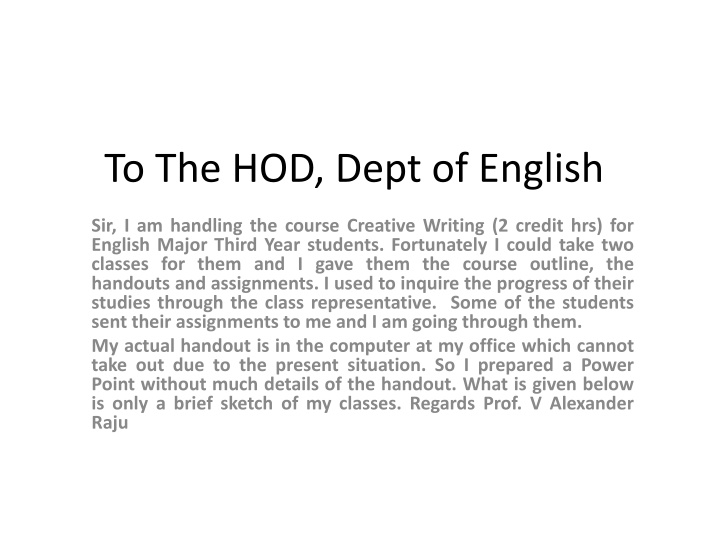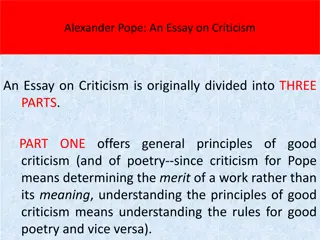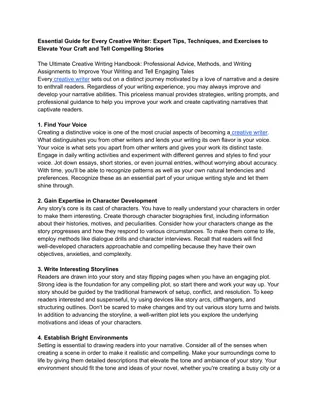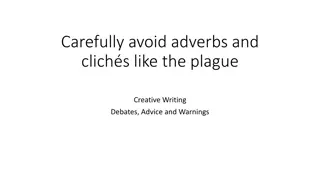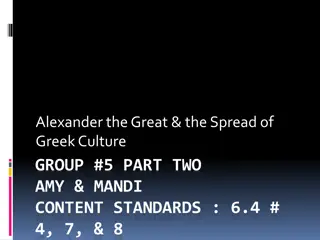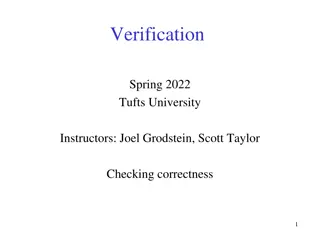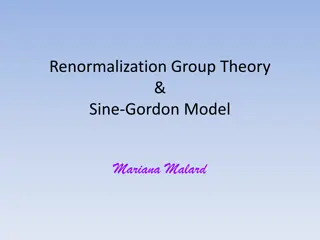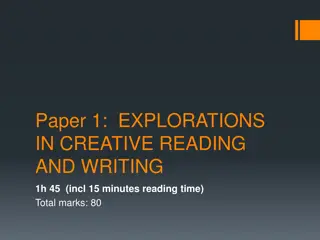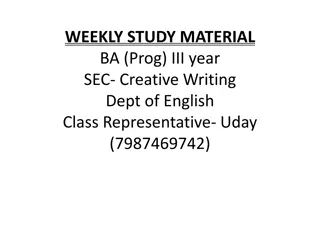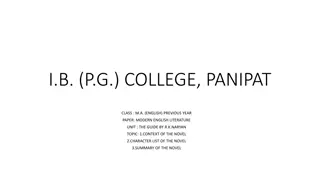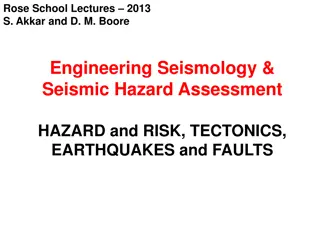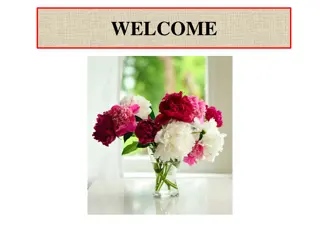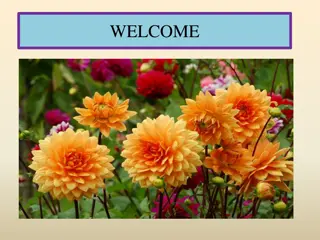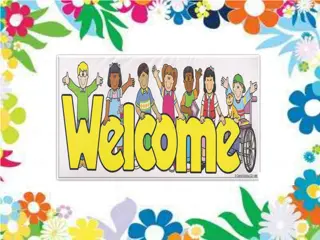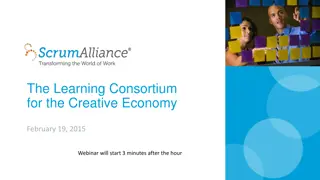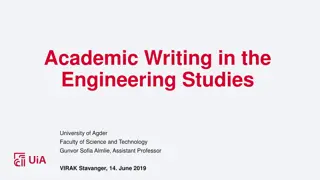Lectures on Creative Writing by Prof. V. Alexander Raju
Join Prof. V. Alexander Raju in exploring Creative Writing theory and practice with engaging discussions and practical exercises. Discover what Creative Writing is, examples, the importance of engaging in it, elements, and the distinctions between Creative and Academic Writing. Dive into a practical session by completing a stanza of the poem "Caprice" by Sarojini Naidu.
Download Presentation

Please find below an Image/Link to download the presentation.
The content on the website is provided AS IS for your information and personal use only. It may not be sold, licensed, or shared on other websites without obtaining consent from the author.If you encounter any issues during the download, it is possible that the publisher has removed the file from their server.
You are allowed to download the files provided on this website for personal or commercial use, subject to the condition that they are used lawfully. All files are the property of their respective owners.
The content on the website is provided AS IS for your information and personal use only. It may not be sold, licensed, or shared on other websites without obtaining consent from the author.
E N D
Presentation Transcript
To The HOD, Dept of English Sir, I am handling the course Creative Writing (2 credit hrs) for English Major Third Year students. Fortunately I could take two classes for them and I gave them the course outline, the handouts and assignments. I used to inquire the progress of their studies through the class representative. Some of the students sent their assignments to me and I am going through them. My actual handout is in the computer at my office which cannot take out due to the present situation. So I prepared a Power Point without much details of the handout. What is given below is only a brief sketch of my classes. Regards Prof. V Alexander Raju
WELCOME TO LECTURES ON CREATIVE WRITING THEORY AND PRACTICAL BY PROFESSOR DR V. ALEXANDER RAJU
1. What is Creative Writing? Handouts are given to the students the above and the following six questions are for discussions in the classroom Students should read the handouts and participate actively in discussions. Alexander Raju
2. What are the examples for creative writing? For discussion
3. Why do we engage in creative writing OR what are the needs for creative writing? For discussion
4. What are the elements of creative writing? For discussion
5. What is Academic Writing? For discussion
6. What are the differences between Creative Writing and Academic Writing? 1.
7. Practical 1. Write a poem Complete the third stanza of the following poem: Caprice by Sarojini Naidu You held a wild flower in your fingertips, Idly you pressed it to indifferent lips, Idly you tore the crimson leaves apart, Alas! It was my heart. You held a wine-cup in your fingertips, Idly you raised it to indifferent lips, Idly you drank and flung away the bowl, Alas! It was my soul. 1.You held a ......... 3.................................. 4. Alas! It was my ............... 2.........to indifferent lips,
8. Practical 2. Read a narrative poem and write the story FABLE BY RALPH WALDO EMERSON The mountain and the squirrel Had a quarrel, And the former called the latter, Little Prig , Bun replied, You are doubtless very big, But all sorts of things and weather Must be taken in together, To make up a year, And a sphere, And I think it no disgrace To occupy my place; Continued
Practical - 2 continued If I m not so large as you, You are not so small as I, And not half so spry, I ll not deny you make A very pretty squirrel track: Talents differ, all is well and wisely put; If I cannot carry forests on my back, Neither can you crack a nut Note: Write the summary with an introduction and conclude it with the moral message of the poem.
Practical 3. Write Paragraphs 1. A friend in need is a friend indeed. 2. All that glitters is not gold. 3. Where there is a will, there is a way. 4. Pride goes before a fall. 5. Might is not always right. 6. I have a cow in the sky. 7. Knowledge is Power.
Practical 4. Outline stories Write a full-fledged story (with a good title, narration, description, dialogue and its moral message), developing the following hints. A holy man was praying a small mouse fell into his lap he felt sympathy changed it into a girl years passed she grew up into a beautiful lady she met a male mouse fell in love she told the truth to the holy man - he changed her into a female mouse moral message of the story.
Practical 5. Diary Writing Activity Students should write daily on a diary, everyday at least for a month, which will be considered for continuous assessment. Note: Don t write silly things be serious Write the most important thing happened on the day a new person you met a new idea came to your mind a new word you studied a book you read an important news of the day etc can be written
8. For Continuous Assessment A Project for 20 points MY CHILDHOOD DAYS Points to be developed: 1. Introduction Background 2. Birth Family Parents Siblings 3. Place of birth - Neighbours Relatives 4. The social, political and cultural background 5. Elementary education school teachers friends an unforgettable event happened
Project -Continued 6. Primary school education school teachers friends an unforgettable event 7. Secondary school education important events or persons present through dialogue 8. Those helped you in your studies- a book a person a teacher a friend 9. Narrate the most memorable event in life 10. Narrate a tragic event that changed your life the situation and its impact on you
Project -Continued 11. Your ambition in life Why? - How to achieve it? 12. Conclusion Your philosophy of life Please note the following: 1. Jot down the points as they come to your mind Arrange them in chronological order 2. A minimum of 12 paragraphs a total of 1500 to 2000 words (15 points for paper and 5 points for the presentation - Total 20 points)
